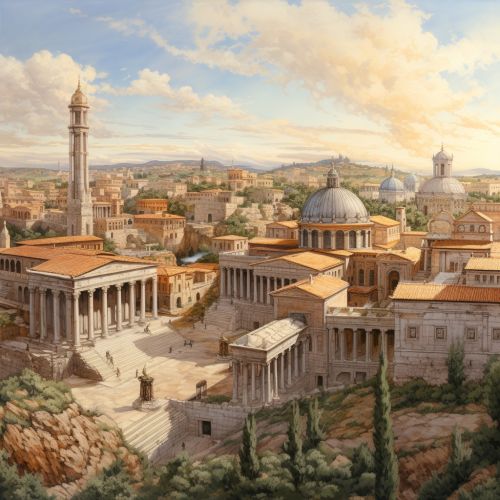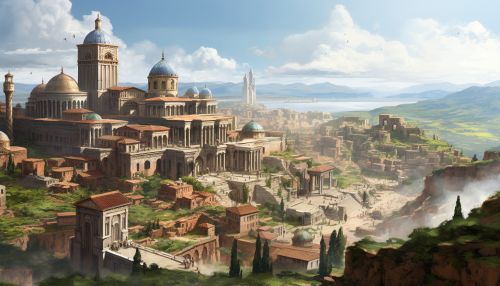Roman Empire
Origins and Foundation
The Kingdom of Rome was traditionally founded in 753 BC, but it was the Republic established in 509 BC that set the stage for the Roman Empire. The Republic was characterized by a complex constitution, an intricate system of checks and balances, and a strong emphasis on civic duty. However, social inequality and political corruption led to instability and the gradual erosion of the republican principles.
Transition from Republic to Empire
The transition from a Republic to an Empire is a significant aspect of Rome's history. This shift was triggered by a series of civil wars, beginning with the conflict between Marius and Sulla. The power struggle culminated in the dictatorship of Julius Caesar, who was eventually assassinated by a group of senators in 44 BC. Following Caesar's death, his adopted heir Octavius emerged victorious from the ensuing power struggle, known as the Final War of the Roman Republic. In 27 BC, Octavius was granted the title of Augustus by the Senate, marking the beginning of the Roman Empire.


The Principate
The initial period of the Roman Empire, known as the Principate, was marked by the rule of the first five emperors: Augustus, Tiberius, Caligula, Claudius, and Nero. These emperors, known as the Julio-Claudian dynasty, ruled Rome from 27 BC to AD 68. During this period, Rome saw significant expansion and development, including the establishment of a professional army and a centralized bureaucracy.
The Crisis of the Third Century
The Crisis of the Third Century was a period of political instability and economic decline in the Roman Empire, which lasted from AD 235 to 284. During this time, the Empire was divided into three competing states: the Gallic Empire, the Palmyrene Empire, and the Italian-centered Roman Empire. The crisis ended with the ascension of Diocletian, who initiated significant military, administrative, and economic reforms.
The Tetrarchy and Constantine the Great
In an attempt to address the Empire's vast size and complexity, Diocletian established the Tetrarchy, a system of rule by four emperors. However, this system eventually collapsed, leading to a series of civil wars. Constantine the Great emerged victorious from these conflicts, and he is known for his conversion to Christianity and the establishment of the city of Constantinople as a second capital.
The Fall of the Western Roman Empire
The Fall of the Western Roman Empire is traditionally dated to 476 AD, when the last Roman emperor of the West, Romulus Augustulus, was deposed by the Germanic chieftain Odoacer. This event marked the end of ancient Rome and the beginning of the Middle Ages in Western Europe.
Legacy
The Roman Empire left a lasting legacy that continues to influence the Western world. This includes the use of the Roman legal system, the Latin language, Roman art and architecture, and the Roman Catholic Church.
